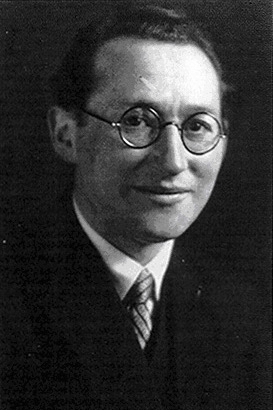Kurt Lewin
 | |
| Died | February 12, 1947 Newtonville, Massachusetts |
| Citizenship | Germany, United States |
| Alma mater | University of Berlin |
| Interests | • Psychology • group think |
Described "groupthink". | |
Kurt Lewin was a German-American psychologist, known as one of the modern pioneers of social, organizational, and applied psychology in the United States. He was director of the Tavistock Institute.[1]
After living the first half of his life in Berlin, Germany, Lewin immigrated to the United States in August 1933 and became a naturalized citizen in 1940. Earlier, he had spent six months as a visiting professor at Stanford in 1930, but on his immigration to the United States, Lewin worked at Cornell University and for the Iowa Child Welfare Research Station at the University of Iowa. Later, he became director of the Center for Group Dynamics at MIT.
While working at MIT in 1946, Lewin received a phone call from the director of the Connecticut State Inter Racial Commission[2] requesting help to find an effective way to combat religious and racial prejudices. He set up a workshop to conduct a "change" experiment, which laid the foundations for what is now known as sensitivity training.[3] In 1947, this led to the establishment of the National Training Laboratories, at Bethel, Maine. Psychologist Carl Rogers believed that sensitivity training is "perhaps the most significant social invention of this century."[4]
Group dynamics
The journal of the Tavistock Institute, Human Relations, was founded with two early papers by Lewin entitled "Frontiers in Group Dynamics".
In a 1947 article, Lewin coined the term "group dynamics". He described this notion as the way that groups and individuals act and react to changing circumstances. This field emerged as a concept dedicated to the advancement of knowledge regarding the nature of groups, their laws, establishment, development, and interactions with other groups, individuals and institutions.
During the early years of research on group processes, many psychologists rejected the reality of group phenomena. Critics shared the opinion that groups did not exist as scientifically valid entities. It had been said by skeptics that the actions of groups were nothing more than those of its members considered separately. Given his background in Gestalt psychology, Lewin justified group existence using the dictum "The whole is greater than the sum of its parts". He theorized that when a group is established it becomes a unified system with supervening qualities that cannot be understood by evaluating members individually. This notion – that a group is composed of more than the sum of its individual members – quickly gained support from sociologists and psychologists who understood the significance of this emerging field.
Many pioneers noted that the majority of group phenomena could be explained according to Lewin's equation and insight and opposing views were hushed. The study of group dynamics remains relevant in today's society where a vast number of professions (e.g., business and industry, clinical/counseling psychology, sports and recreation) rely on its mechanisms to thrive.[5]
The most notable of Lewin's contributions was his development of group communication and group dynamics as major facets of the communication discipline. Lewin and his associated researchers shifted from the pre-existing trend of individualist psychology and then expanded their work to incorporate a macro lens where they focused on the "social psychology of small group communication" (Rogers 1994). Lewin is associated with "founding research and training in group dynamics and for establishing the participative management style in organizations".[6] He carved out this niche for himself from his various experiments.
In his Berlin research, Lewin utilized "group discussions to advance his theory in research." In doing so, there was certainly the complication of not knowing exactly whom to attribute epiphanies to as an idea collectively came into fruition. In addition to group discussions, he became increasingly interested in group membership. He was curious as to how perspectives of an individual in relation to the group were solidified or weakened. He tried to come up with the way identity was constructed from standpoint and perspectives. These were the beginnings of what ended up developing into "groupthink". Lewin started to become quite interested in how ideas were created and then perpetuated by the mentality of a group. Not included in this chapter is how important this became in looking at group dynamics across disciplines – including studying John F Kennedy and the way he tried to interact with his advisors in order to prevent groupthink from occurring.
References
- ↑ Document:Project Monarch
- ↑ https://books.google.com/books?id=5CewfX_MG-kC&q=Connecticut+State+Inter-Racial+Commission&pg=PA65
- ↑ Lasch-Quinn, E. (2001) Race Experts: How Racial Etiquette, Sensitivity Training, and New Age Therapy Hijacked the Civil Rights Revolution, New York, W. W. Norton.
- ↑ Race Experts: How Racial Etiquette, Sensitivity Training, and New Age Therapy Hijacked the Civil Rights Revolution, New York, W. W. Norton.
- ↑ Forsyth, D.R. (2010) Group Dynamics
- ↑ Rogers, Everett (1994). A History of Communication Study: A Biological Approach. NY: The Free Press.